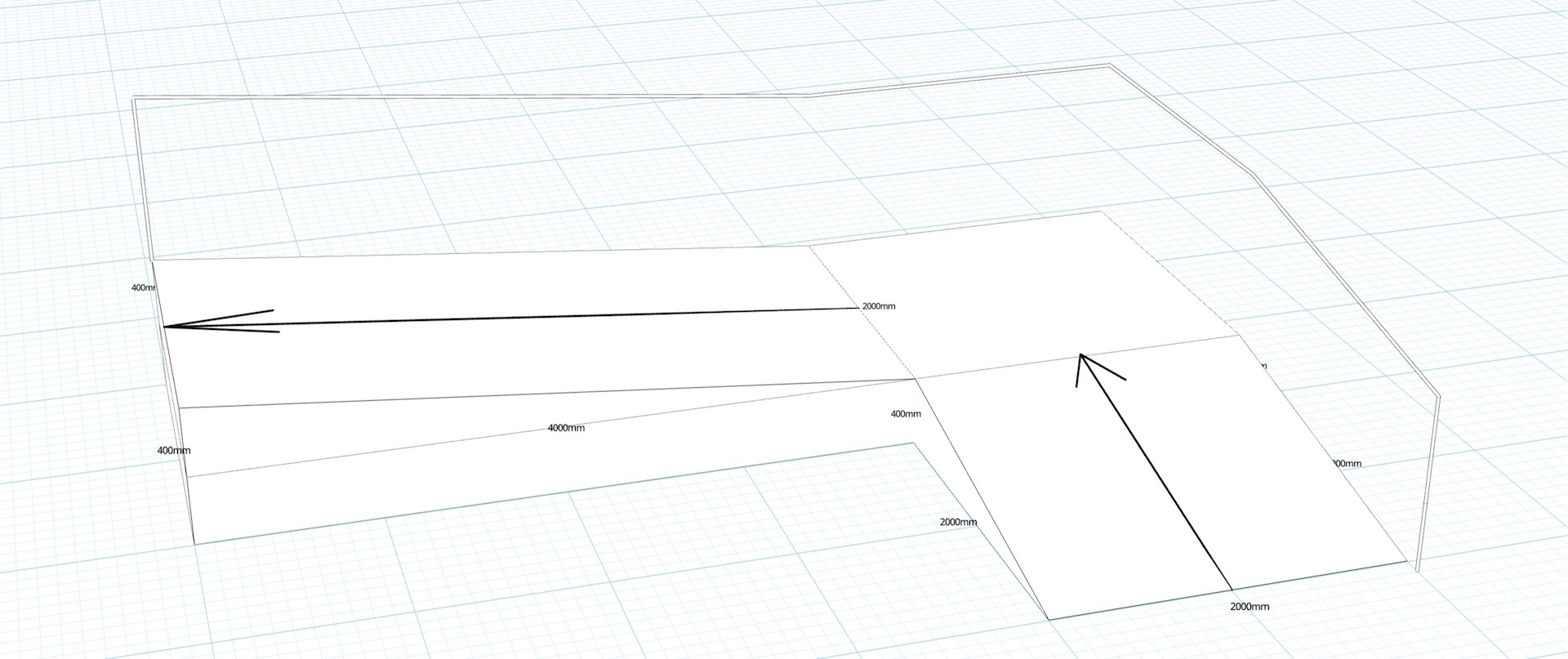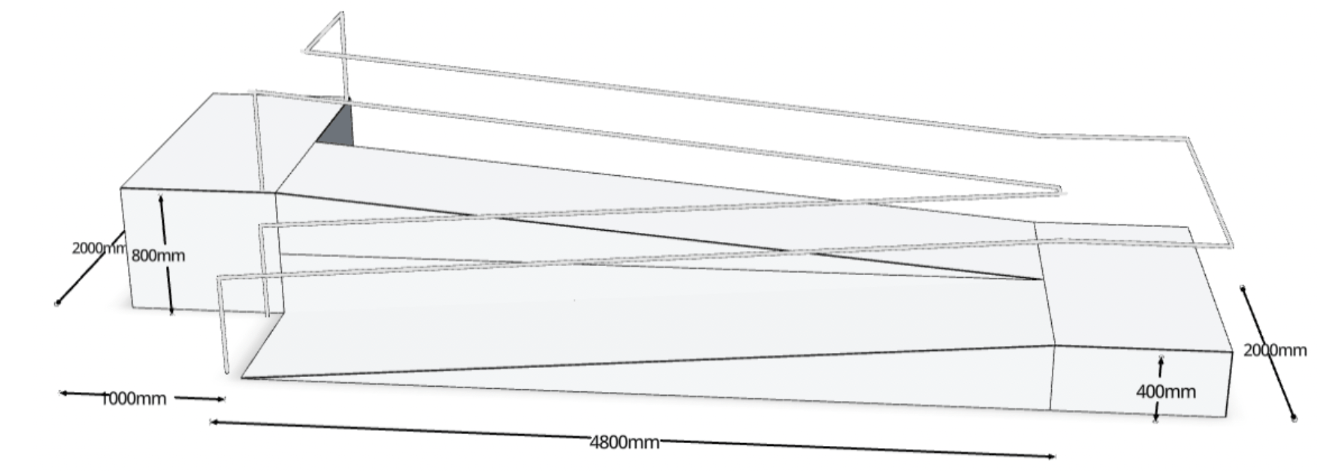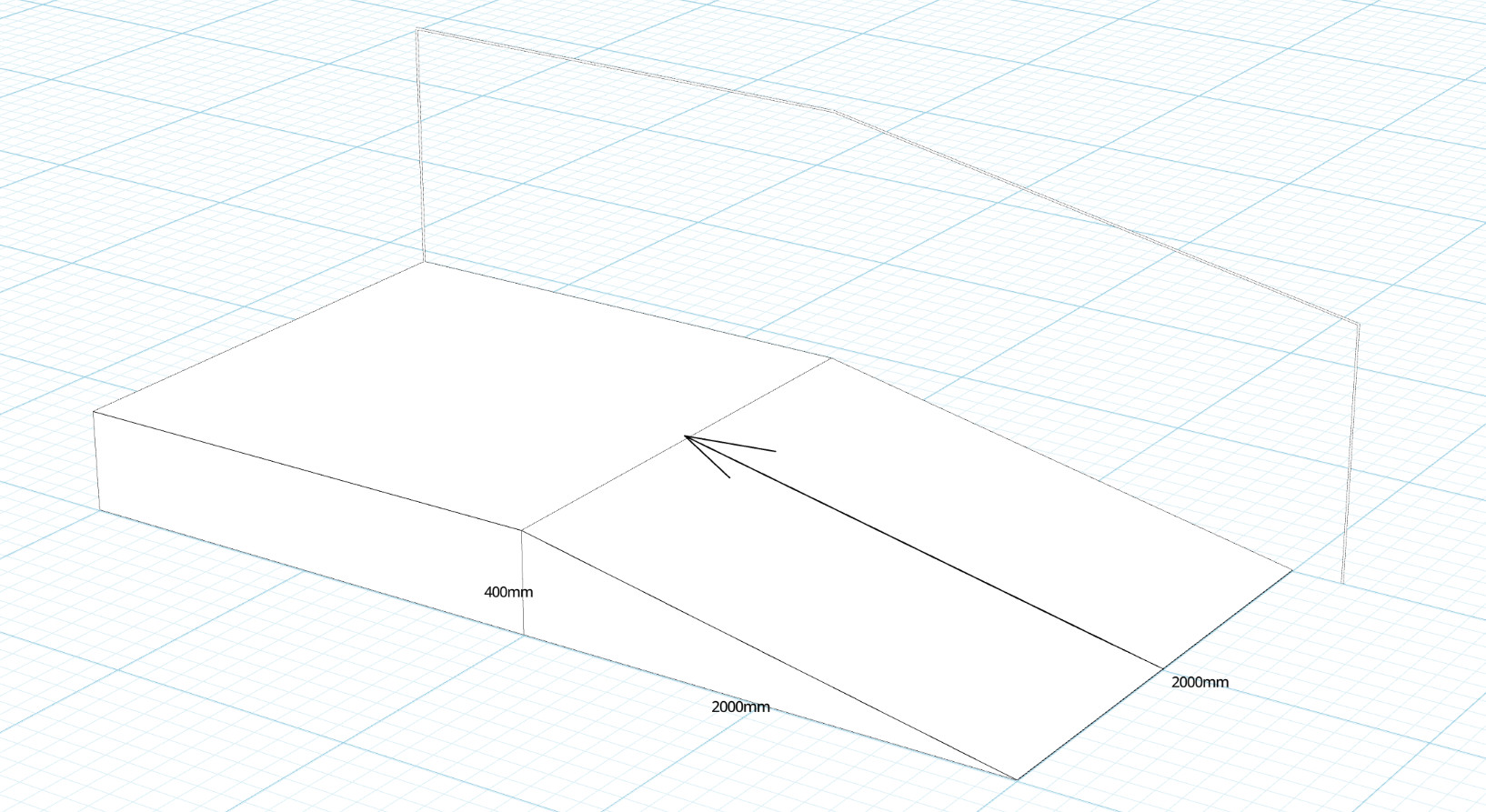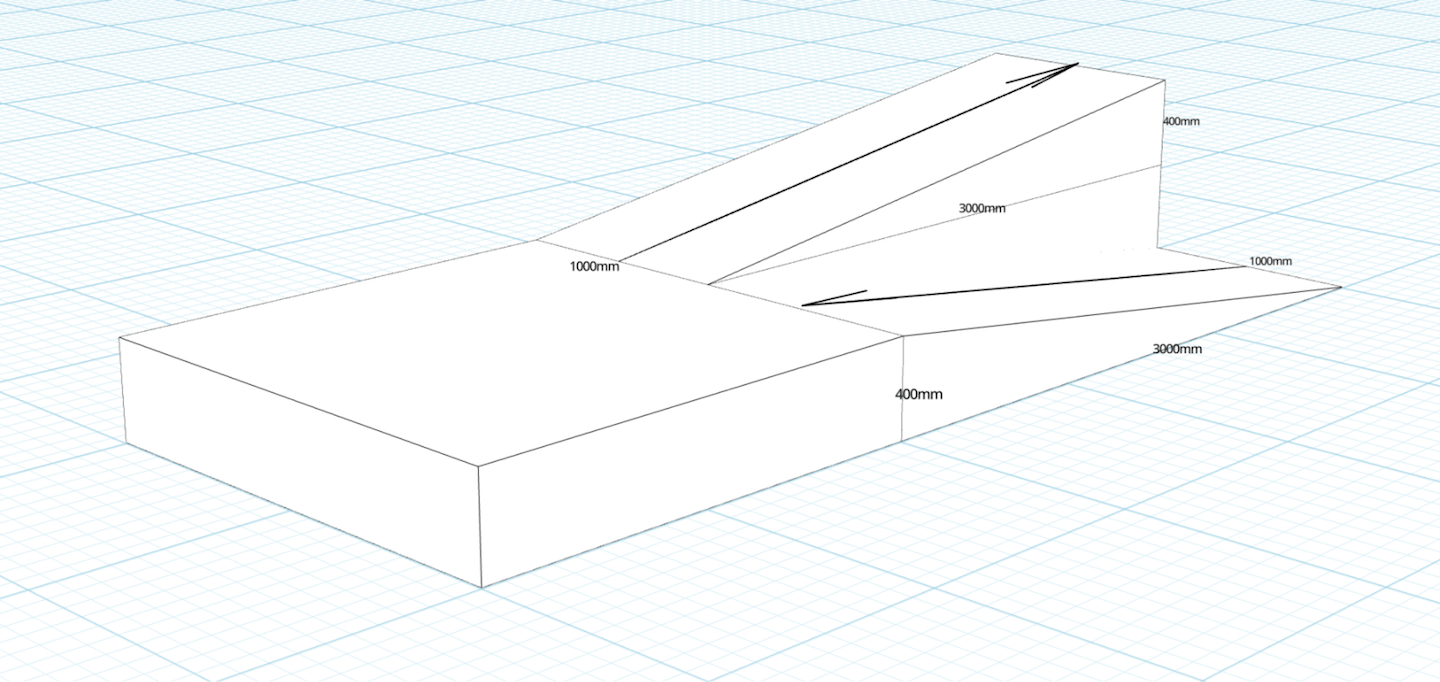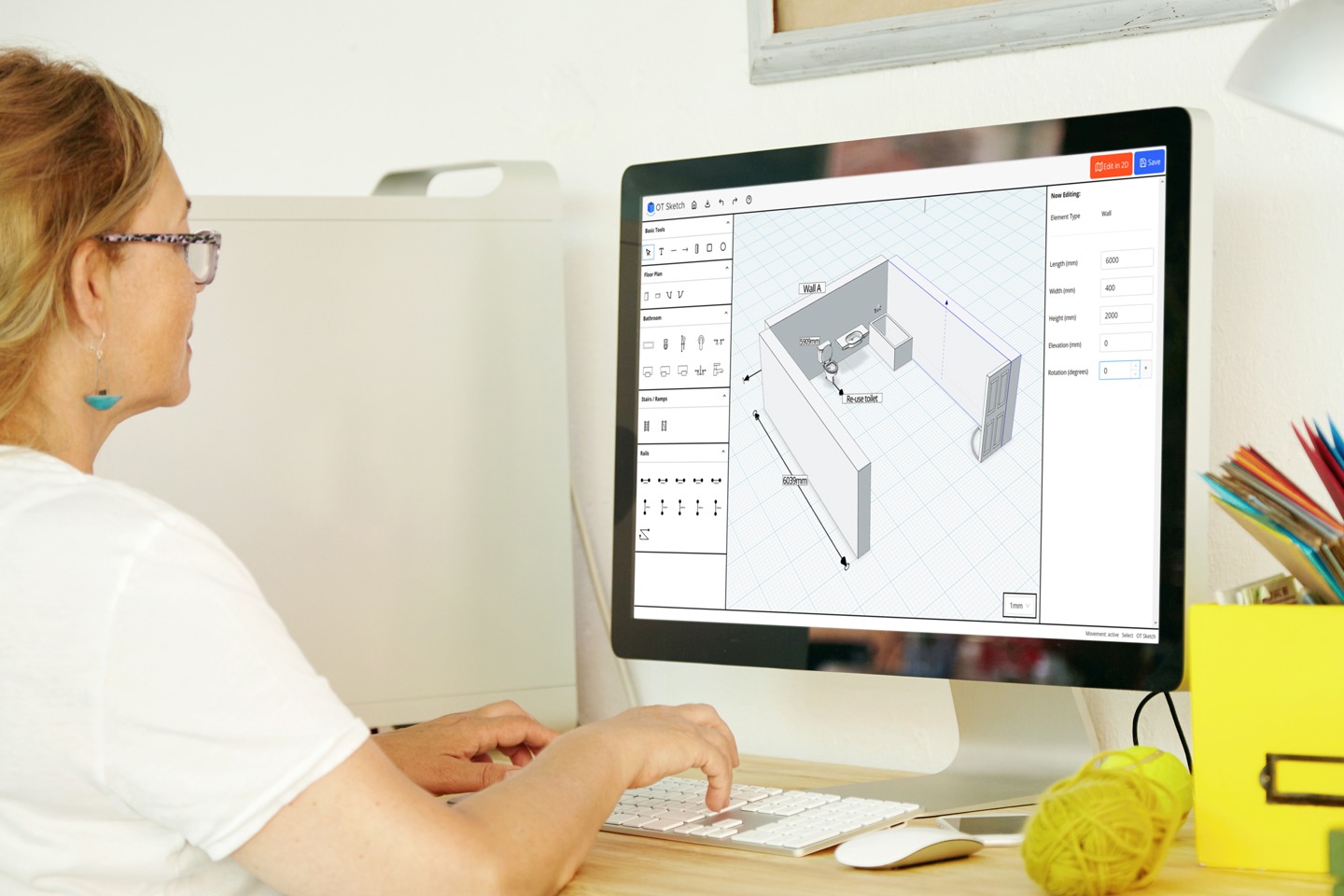As an Occupational Therapist, an important part of your role may be to assess for and prescribe ramps.
Through completion of a comprehensive Occupational Therapy functional assessment, barriers to performance can be identified and prescription of home modifications, such as ramps, can be recommended.
This guide will provide you with almost everything you need to know about ramps including the different types and when they are appropriate, how to assess them and general standards to be aware of, and what documentation and diagrams you might require.
We say almost because:
- A comprehensive Occupational Therapy functional assessment is critical to ensuring correct ramp prescription;
- There is always more to learn;
The gradient should be proportional to the total height of the ramp and should be guided by the relevant building standards. See our section on gradients for more information; - Ramps should be 1000mm wide, measured between the internal edge of the handrails (if using);
- Landings should be considered for ramps with a gradient of 1:10 or greater, and when the ramp meets a door or entry point;
- Landings should be provided at intervals no greater than 9m for ramps of 1 in 14 gradient and no greater than 15m for ramps of 1 in 20 gradient;
- Landings should be a minimum of 1200mm long;
- Ramps shall have a handrail where indicated (please read our rails guide for further information);
- Ramps shall be setback a minimum of 900mm from a property boundary and setback a minimum of 400mm from the intersection of an internal corridor;
- There should be a minimum of 2000mm head clearance.
When assessing and prescribing ramps there are important things to consider including:
- Types of ramp
- Ramp materials and finish
- Landings
- Handrails
- Other considerations
1. Types of Ramps
Within building standards, there are often references to different types of ramps.
We describe ramps in accordance with the overall height. For example, a threshold ramp has a maximum height of 35mm. The height of a ramp is also referred to as the ‘rise’.
Threshold ramp
A threshold ramp has a maximum rise of 35mm; a maximum length of 280mm and maximum gradient of 1 in 8. When positioned at a doorway, the threshold ramp should be within 20mm of the door leaf (internal section of the door frame) and should extend the full width of the doorway or opening.
The edge of a threshold ramp should be splayed or taped at a 45 degree angle where the ramp edge does not abut a wall.
Step ramp
A step ramp has a maximum rise of 190mm, maximum length of 1900mm and maximum gradient of 1 in 10. The ramp should have a slip resistant surface.
The edge of a step ramp should be splayed or taped at a 45 degree angle where the ramp does not abut a wall or should have a suitable barrier. A suitable barrier may include a balustrade, kerb or kerb rail.
Kerb ramp
A ramp located within or attached to a kerb is often referred to as a kerb ramp.
These types of ramps are typically seen on a public street. A kerb ramp has a maximum rise of 190mm, maximum length of 1520 mm and maximum gradient of 1 in 8. Kerb ramps should have a slip resistant surface.
Ramp
A ramp can be defined as an inclined surface between two landings with a gradient steeper than 1 in 20 but not steeper than 1 in 14. The length of the ramp is determined by the height of the rise with reference to the gradient required.
2. Ramp Material and Finish
Ramps are required to have a slip resistant finish to ensure the safety of those using the ramp. When considering the prescription of the ramp material, some important things to consider include:
- Location
- Budget
- Longevity requirements
- Maintenance requirements
Typically, the following materials are used for ramps:
Wood
Wood is generally less expensive and many people prefer the aesthetics of a wooden ramp as it looks more homely compared to concrete and metal which can look more industrial.
Wood, however, must be sealed and requires greater maintenance, such as yearly staining, to prolong its lifespan.
Aluminium
Modular or prefabricated ramps are often made out of aluminium and can be used as permanent options for large ramps as an alternative to wood.
They can also be great temporary or portable options and will typically last a long time, although are subject to corrosion in certain environments.
It is important to note that aluminium can hold heat and be reflective which can impact functionality.
Concrete
Concrete ramps are very low maintenance, however, can be quite expensive to install, are a permanent structure, and are prone to breaking / cracking if the base is not appropriately prepared for pouring.
Concrete ramps are generally suitable for areas with a high fire risk rating or high altitude.
Steel
Steel ramps typically carry substantial costs and therefore, are not generally seen in residential homes unless required for specific reasons.
A stainless steel ramp might be used in a coastal location to prevent rusting, or a high fire risk rating area.
Rubber
Rubber ramps have become very popular for indoor and outdoor threshold ramps due to being hard wearing, semi-permanent, and cost-effective for smaller ramps.
For larger ramps, rubber can become expensive and heavy.
EnviroWalk
EnviroWalk is also becoming very popular due to its exceptional strength and high grip rating (R13).
Although, this product can have large gaps which can be hazardous with walking aids.
3. Ramp Landings
Ramp landings are important and should be considered whenever there is a change in direction, for ramps with a gradient of 1:10 or greater, and when the ramp meets a door or entry point.
Ramp landings should also be included:
- At intervals no greater than 9 metres when the ramp has a gradient of 1:14;
- At intervals no greater than 15 metres when the ramp has a gradient equal to or greater than 1:20;
According to the Australian Standards, a ramp landing should be:
- A minimum length of 1200mm when there is no change in direction;
- A minimum length of 1500mm and width of 1500mm where there is a change in direction of under 90 degrees;
- A minimum of 1500mm x 2070mm when there is a 180 degree change of direction.
Ramp landing measurements can vary significantly when involving a doorway according to the approach direction, door size and direction of door opening.
Additionally, landings of a kerb ramp can vary depending on any change in direction.
- Without a change in direction, a landing is to be a minimum of 1200mm long and 1000mm wide;
- Where there is a T-junction, the kerb ramp landing should be a minimum of 1500mm long and 2000mm wide; and
- Where there is a single change in direction, the ramp landings should be a minimum of 1500mm long and 1500mm wide.
All factors that may influence the circulation space required on the landing should be considered, for example, bariatric or large equipment.
4. Rails / Barriers
Please refer to our rails guide for in-depth information about handrails and grab rails. There are several important handrail considerations however that are specific to ramps.
A barrier is required for any ramp where the ramp or landing level is more than 1000mm high off the ground below it. Barriers can include:
- Handrail with a kerb rail (this is most common);
- Balustrades;
- Glass;
- Horizontal wire systems with a kerb rail.
Tip: You can read more about balustrades and barriers in our Occupational Therapist’s Guide to Stairs.
Other considerations
Head clearance is an important consideration when prescribing a ramp.
There should be a minimum of 2000mm head clearance above the ramp surface and landings to ensure the ramp can be used safely. You may need to consider lighting, roofing, window sills, etc.
Documentation and Diagrams
Once you have completed a comprehensive functional assessment to determine the most appropriate ramp modifications for your client, you will need to communicate this to the builder or tradesperson you are requesting to complete the works.
One way to do this is by writing a scope of works (also referred to as SOW) that documents the works that you are recommending and includes scale diagrams of the proposed modifications.
A scope of works will typically include:
- Photos of the space to be modified;
- A detailed description of the proposed modifications;
- Measurements of the existing space and proposed modifications; and
- Diagrams of the proposed modifications.
It is a good idea to include a clause for deviation in your scope of works advising the builder or tradesperson to contact the OT, if they are unable to complete the installation as outlined.
Design Accurate Ramps with OT Sketch – Get Started Now!
Occupational Therapist’s use a variety of software to support the design process of minor and major home modifications. The diagrams can range from simple to complex and need to clearly show the proposed works in order to achieve the best possible outcome for our clients.
Here at OT Sketch, we are passionate about helping Occupational Therapists design professional ramp modifications.
- Our software supports comprehensive ramp modification diagrams.
- Our product was designed in conjunction with practising Occupational Therapists.
- We allow exportation of 2D/3D diagrams for our users to attach to their home modification reports.
- Our product is suitable for OTs world-wide.
To get started as an individual or organisation, please click here.
Glossary
Circulation space: Circulation space refers to the space that is used for people to circulate such as corridors, entrances, stairs, landings and areas that connect two spaces.
Door leaf: The part of the door that swings open and closed, sitting inside the doorframe when the door is closed.
Gradient: The degree of inclination.
Kerb Rail: A rail that is placed within 65mm of the floor height and acts as a barrier to prevent people or objects from falling from a ramp.
Obstruction: A thing that impedes or prevents passage such as an obstacle or blockage.
Rise / riser: The vertical section between the treads of a staircase or the height of a step.
Scope of Works (SOW): A document that contains a description of the the work to be performed.
Setback: The horizontal distance from a boundary or obstruction.
Slip resistant surface: A surface that has sufficient friction to enable an individual to traverse that surface without an unreasonable risk of slipping.
Splayed: To spread outward.
Tapered: To diminish or reduce in thickness towards one end.
T-junction: Where one point meets another at a right angle without crossing it.
Reference List
Australian Standards 2021
FRP fibreglass grating – ENVIROWALK pty ltd – disability ramps – envirotread stairs – walkways – platforms – roof access – jetties – pontoons – envirotread safety products – tactiles – core Trays – FRP Cable Trays (no date) FRP FIBREGLASS GRATING – ENVIROWALK PTY LTD – Disability Ramps – EnviroTread Stairs – Walkways – Platforms – Roof Access – Jetties – Pontoons – EnviroTread Safety Products – Tactiles – Core Trays – FRP Cable Trays. Available at: http://www.envirowalkgrating.com/ (Accessed: February 28, 2023).


